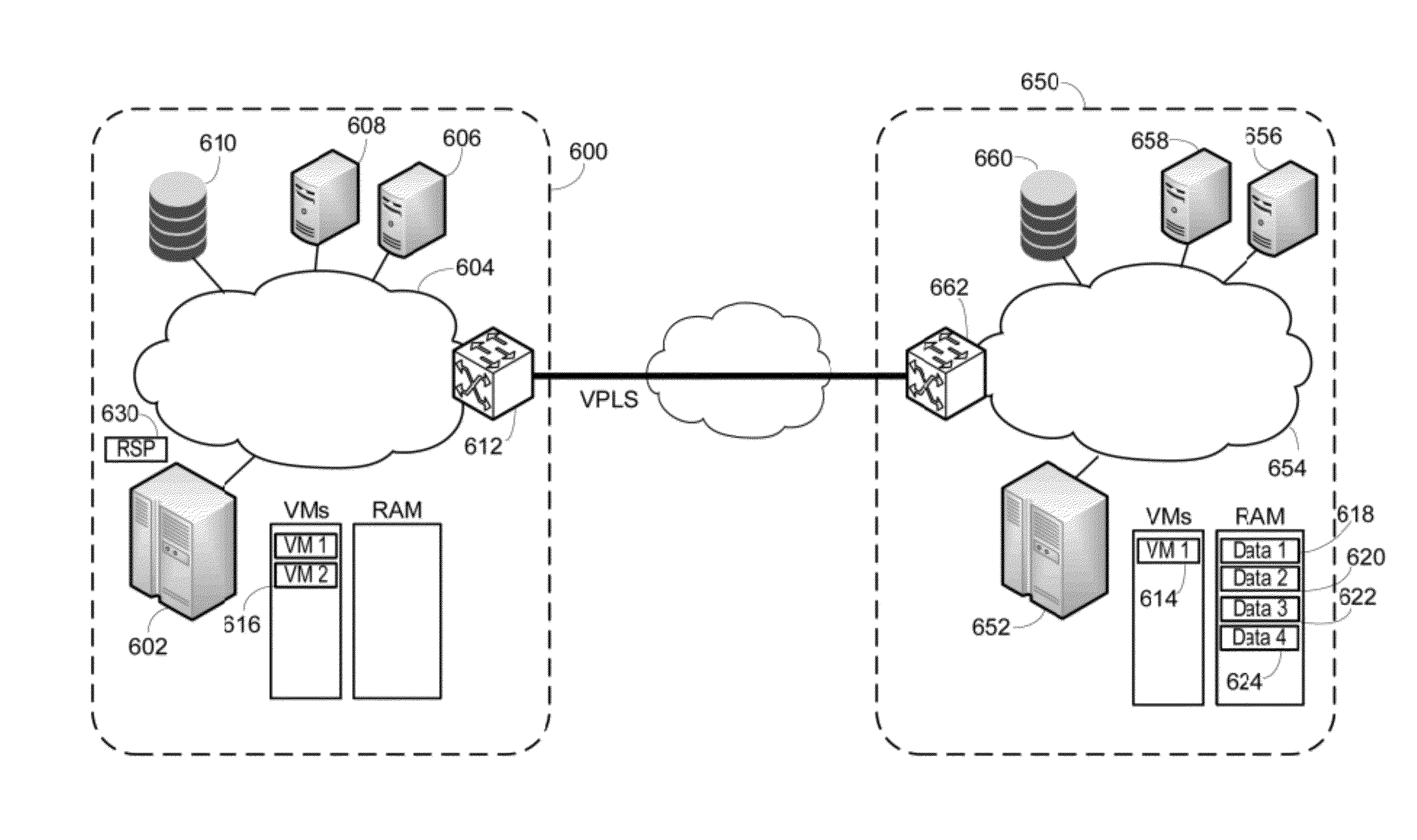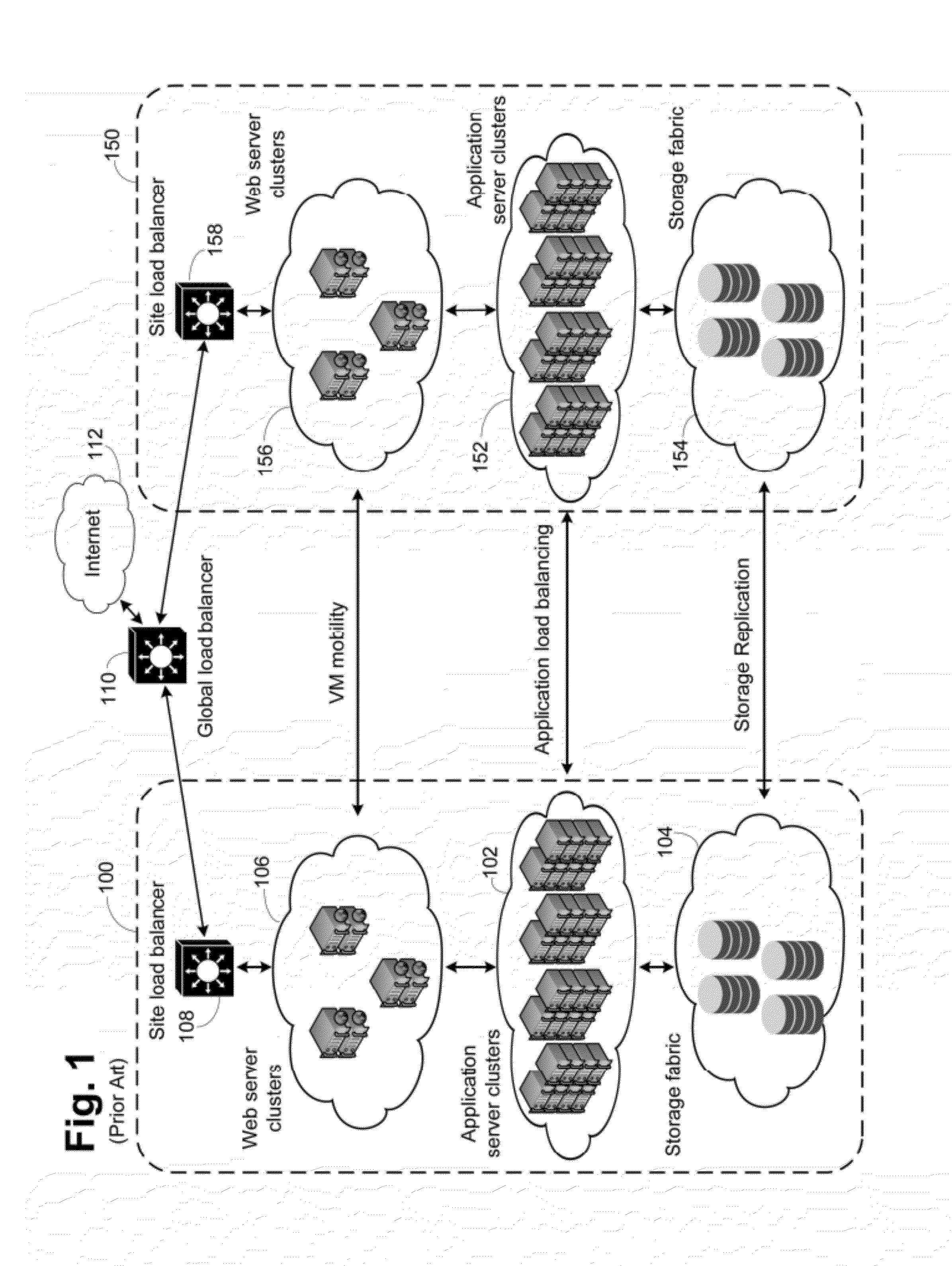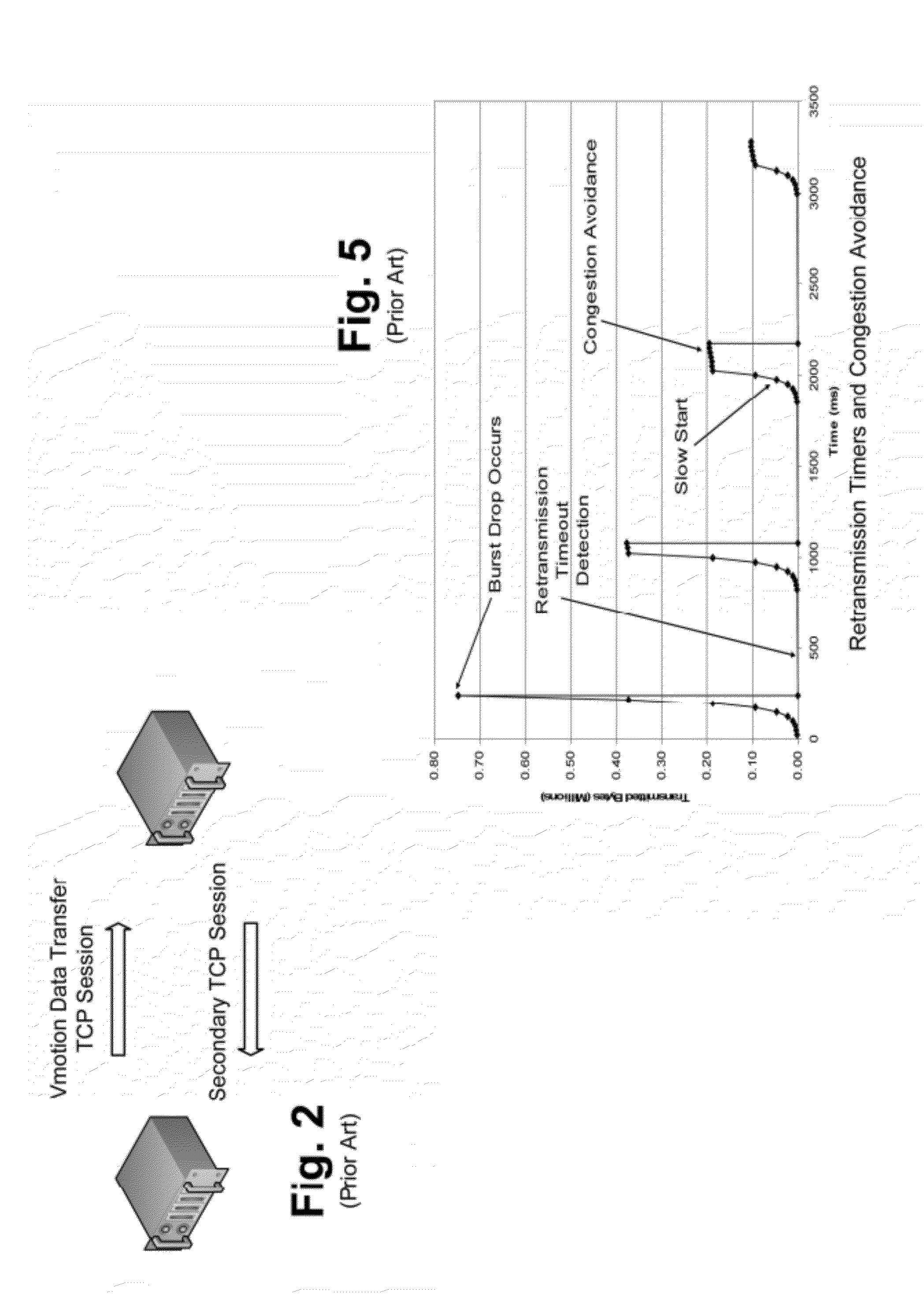Virtual machine and application movement over a wide area network
- Summary
- Abstract
- Description
- Claims
- Application Information
AI Technical Summary
Benefits of technology
Problems solved by technology
Method used
Image
Examples
Embodiment Construction
[0043]Referring to FIG. 7, a network illustrating portions according to the present invention is shown. A first data center 700 is shown having three separate internal networks, a TRILL network 702, a normal Ethernet spanning tree protocol (STP) network 704 and a storage area network (SAN) 706. Application servers 708 are connected to the TRILL network 702, while application servers 710 are connected to the STP network 704 and the SAN 706. Storage 712 is shown connected to the SAN 706. Each of the networks 702, 704 and 706 has a converged network extension (CNE) device 714, 716, 718 connected. The CNE devices 714, 716, 718 are connected to a router 720, which in turn is connected to a WAN 722. A second data center 750 is similar, having a VCS Ethernet fabric network 752 and a SAN 754. Application servers 756 are connected to each network 752 and 754, with storage connected to the SAN 754. CNE devices 760, 762 are connected to each network 752, 754 and to a router 764, which is also ...
PUM
 Login to View More
Login to View More Abstract
Description
Claims
Application Information
 Login to View More
Login to View More - R&D
- Intellectual Property
- Life Sciences
- Materials
- Tech Scout
- Unparalleled Data Quality
- Higher Quality Content
- 60% Fewer Hallucinations
Browse by: Latest US Patents, China's latest patents, Technical Efficacy Thesaurus, Application Domain, Technology Topic, Popular Technical Reports.
© 2025 PatSnap. All rights reserved.Legal|Privacy policy|Modern Slavery Act Transparency Statement|Sitemap|About US| Contact US: help@patsnap.com



